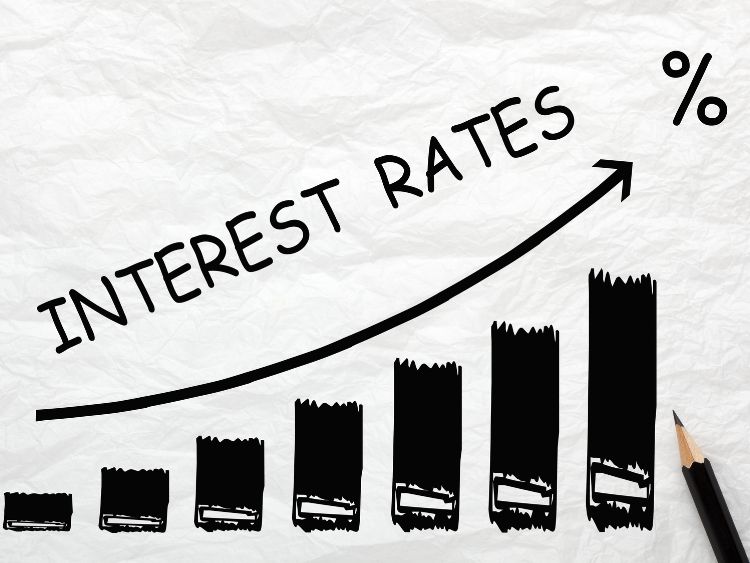Interest rates play a crucial role in the economy, influencing everything from consumer loans to corporate financing. With the current global economic climate, staying updated on floating interest rate news is more important than ever. In this comprehensive guide, we’ll delve into what floating interest rates are, how they differ from fixed interest rates, recent trends, and what you can expect moving forward.
What Are Floating Interest Rates?
Floating interest rates, also known as variable or adjustable rates, are interest rates that fluctuate over time based on an underlying benchmark or index. Unlike fixed interest rates, which remain constant for the duration of a loan, floating rates can change periodically. This can result in varying monthly payments, making financial planning a bit more challenging but potentially more advantageous if rates decrease.
How Do Floating Interest Rates Work?
Floating interest rates are typically tied to a benchmark rate such as the LIBOR (London Interbank Offered Rate) or the Federal Funds Rate. When these benchmarks move up or down, the interest rate on your loan or mortgage adjusts accordingly. Here’s a breakdown of the process:
- Initial Rate Period: At the beginning of the loan, you may have an initial fixed rate period where the interest rate remains the same.
- Adjustment Period: After the initial period, the rate will adjust at predetermined intervals, such as annually or semi-annually.
- Margin: The loan’s margin is a fixed percentage added to the benchmark rate to determine the total interest rate. For example, if the benchmark is 2% and the margin is 2%, your interest rate will be 4%.
Pros and Cons of Floating Interest Rates
Like anything in finance, floating interest rates come with their own set of advantages and disadvantages. Let’s take a closer look:
Pros
- Potential Savings: If benchmark rates decrease, borrowers can benefit from lower interest payments.
- Initial Lower Rates: Often, floating rate loans offer a lower initial rate compared to fixed-rate loans, which can be enticing for short-term financial planning.
- Flexibility: Ideal for borrowers who plan to refinance or pay off their loan before the adjustment period kicks in.
Cons
- Uncertainty: The main drawback is the uncertainty and potential for rates to increase, leading to higher monthly payments.
- Complexity: Managing a floating rate loan requires a better understanding of financial markets and interest rate movements.
- Budgeting Challenges: Variable payments can complicate budgeting and financial planning.
Recent Floating Interest Rate News
Keeping up with floating interest rate news is vital for anyone with an adjustable-rate loan or those considering one. Let’s explore some recent developments:
Global Economic Trends
In recent years, global economic conditions have led to significant shifts in interest rates. Central banks around the world, including the Federal Reserve in the United States, have adjusted their benchmark rates in response to economic indicators such as inflation, employment, and GDP growth. For instance, the COVID-19 pandemic saw many central banks slashing rates to stimulate economic activity.
Benchmark Rate Changes
The transition away from LIBOR, once the most common benchmark for floating rates, to alternative rates like the Secured Overnight Financing Rate (SOFR) is a significant development. This change is aimed at creating a more stable and transparent interest rate environment.
Inflation and Interest Rates
Inflation is a key factor influencing interest rates. As inflation rises, central banks may increase rates to cool down the economy. Conversely, low inflation may lead to rate cuts to encourage spending and investment.
Impact on Borrowers and Investors
Understanding how floating interest rates affect different financial products is crucial for both borrowers and investors. Let’s examine the impact on some common financial instruments:
Mortgages
Floating rate mortgages, also known as Adjustable-Rate Mortgages (ARMs), are popular in certain markets. Borrowers might start with a lower rate than fixed-rate mortgages, but their payments can increase significantly after the adjustment period.
Personal Loans
Personal loans with floating rates can offer initial savings, but borrowers must be prepared for potential rate increases. It’s essential to read the loan agreement carefully and understand the terms of rate adjustments.
Bonds and Investments
For investors, floating rate bonds can be an attractive option during rising interest rate environments, as their yields adjust with market rates. However, these investments can also carry higher risk if rates decrease.
FAQs About Floating Interest Rates
What’s the difference between floating and fixed interest rates?
Floating interest rates vary over time based on an index, while fixed interest rates remain constant throughout the loan term.
How often do floating rates adjust?
Adjustment periods vary by loan but are typically annual or semi-annual.
Can I switch from a floating rate to a fixed rate?
In many cases, yes. Some loans offer the option to convert to a fixed rate after a certain period.
Are floating rate loans riskier than fixed rate loans?
They can be, due to the potential for rate increases, but they also offer the opportunity for lower payments if rates drop.
How do I decide if a floating rate loan is right for me?
Consider your financial stability, risk tolerance, and plans for the loan term. Consulting with a financial advisor can also be beneficial.
Summary
Floating interest rates offer a dynamic option for borrowers and investors, providing potential savings but also introducing an element of risk. Staying informed with the latest floating interest rate news can help you make educated decisions about your finances. Whether you’re considering a mortgage, personal loan, or investment, understanding the mechanics and implications of floating interest rates is crucial.
Authoritative Links
For further reading and up-to-date information on floating interest rates, visit the following authoritative sources:
- Federal Reserve: https://www.federalreserve.gov
- Bank of England: https://www.bankofengland.co.uk
- European Central Bank: https://www.ecb.europa.eu
- Financial Times: https://www.ft.com
- Wall Street Journal: https://www.wsj.com
By keeping an eye on these sources, you can stay ahead of the curve and make informed financial decisions.

